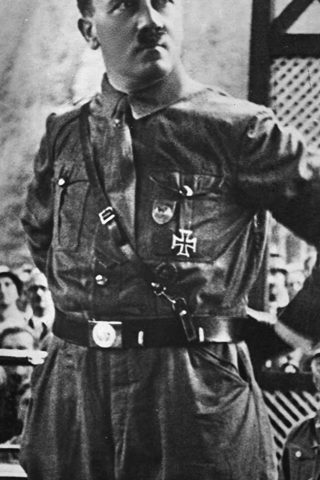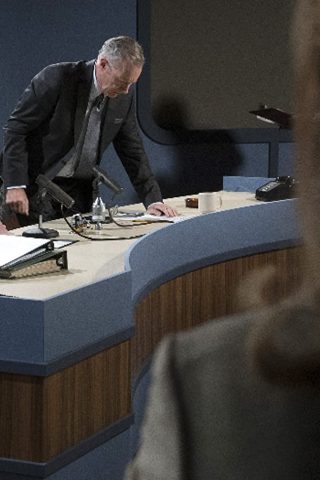
| Name | Adolf Hitler |
| Phone |  |
| Email ID |  |
| Address |  |
| Click here to view this information |
Born the fourth of six children to Austrian customs officer Alois Hitler–who had been married twice before–and the former Klara Polzl, Adolf Hitler grew up in a small Austrian town in the late 19th century. He was a slow learner and did poorly in school. He was frequently beaten by his authoritarian father. Things got worse when Adolf’s older brother, Alois Jr., ran away from home. His mild-mannered mother occasionally tried to shield him, but was ineffectual. Adolf’s attempt to run away at 11 was unsuccessful. At the age of 14 he was freed when his hated father died – an event that he did not mourn.
Hitler dropped out of high school at age 16 and went to Vienna, where he strove to become an artist, but was refused twice by the Vienna Art Academy. By this time Hitler had become an ardent German nationalist–although he was not German but Austrian–and when World War I broke out, he crossed into Germany and and joined a Bavarian regiment in the German army. He was assigned as a message runner but also saw combat. Temporarily blinded after a gas attack in Flanders in 1918, he received the Iron Cross 2nd Class and was promoted from private to corporal. In 1918, when the war ended, Hitler stayed in the army and was posted to the Intelligence division. He was assigned to spy on several radical political parties that were considered a threat to the German government. One such organization was the German Workers Party. Hitler was drawn by party founder Dietrich Eckart, a morphine addict who propagated doctrines of mysticism and anti-Semitism. Hitler soon joined the party with the help of his military intelligence ties. He became party spokesman in 1919, renamed it the National Socalist German Workers Party (NSDAP/NAZI) and declared himself its Fuhrer (leader) one year later. In 1920 Hitler’s intelligence handler, Munich-based colonel named Karl Haushofer, introduced the swastika insignia. In 1921 Haushofer founded the paramilitary Storm Troopers (“Sturmabteiling”, or SA), composed of German veterans of WWI and undercover military intelligence officers. They helped Hitler to organize a coup attempt–the infamous “beer hall putsch”–against the Bavarian government in Munich in 1923, but it failed. The “rebels” marched on Munich’s city hall, which was cordoned off by police. Hitler’s men fired at the police and missed; the police fired back and didn’t, resulting in several of Hitler’s fellow Nazis being shot dead. Hitler himself was arrested, convicted of treason and sent to prison. During his prison time he was coached by his advisers and dictated his book “Mein Kampf” (“My Struggle”) to his deputy Rudolf Hess. He only served several months in prison before being released. By 1925 the Nazi party was in much better straits both organizationally and financially, as it had secured the backing of a large group of wealthy conservative German industrialists, who funneled huge amounts of money into the organization. Hitler was provided with a personal bodyguard unit named the “Schutzstaffel”, better known as the SS. The Nazis began to gain considerable support in Germany through their network of army and WWI veterans, and Hitler ran for President in 1931. Defeated by the incumbent Paul von Hindenburg, Hitler next attempted to become Chancellor of Germany. Through under-the-table deals with powerful conservative businessmen and right-wing politicians, Hitler was appointed Chancellor in January 1933. One month later, a mysterious fire–which the Nazis claimed had been started by “terrorists” but was later discovered to have been set by the Nazis themselves–destroyed the Reichstag (the building housing the German parliament). Then Hitler’s machine began to issue a series of emergency decrees that gave the office of Chancellor more and more power.
In March of 1933 Hitler persuaded the German parliament to pass the Enabling Act, which made the Chancellor dictator of Germany and gave him more power than the President. Two months later Hitler began “cleaning house”; he abolished trade unions and ordered mass arrests of members of rival political groups. By the end of 1933 the Nazi Party was the only one allowed in Germany. In June of 1934 Hitler turned on his own and ordered the purge of the now radical SA–that he now saw as a potential threat to his power–which was led by one of his oldest friends, a thug and street brawler named Ernst Röhm. Röhm’s ties to Hitler counted for nothing, as Hitler ordered him assassinated. Soon President Hindenburg died, and Hitler merged the office of President with the office of Chancellor. In 1935 the anti-Jewish Nuremburg laws were passed on Hitler’s authorization. A year later, with Germany now under his total control, he sent troops into the Rhineland, which was a violation of the World War I Treaty of Versailles. In 1938 he forced the union of Austria with Germany and also took the Sudetenland, a region of Czechoslovakia near the German border with a large ethnic German population, on the pretext of “protecting” the German population from the Czechs. In March 1939 Hitler overran the rest of Czechoslovakia. On 23 August 1939 Hitler and Joseph Stalin made a non-aggression treaty. In September of 1939 Hitler and Stalin invaded Poland. France and the British Commonwealth and Empire declared war on Germany. In 1940 Germany occupied Denmark, Norway and the Low Countries, and launched a major offensive against France. Paris fell and France surrendered, after which Hitler considered invading the UK. However, after the German Air Force was defeated in the Battle of Britain, the invasion was canceled. The British had begun bombing German cities in May 1940, and four months later Hitler retaliated by ordering the Blitz. In 1941 German troops assisted Italy, which under dictator Benito Mussolini was a German ally, in its takeover of Yugoslavia and Greece. Meanwhile, in Germany and the occupied countries, a program of mass extermination of Jews had begun.
On June 22, 1941, German forces invaded the Soviet Union. In addition to ore than 4,000,000 German troops, there were additional forces from German allies Romania, Italy, Czechoslovakia, Hungary, Croatia, Spain and Finland, among others. Hitler used multinational forces in order to save Germans for the future colonization of the Russian lands. Following the detailed Nazi plan, code-named “Barbarossa,” Hitler was utilizing resources of entire Europe under Nazi control to feed the invasion of Russia. Three groups of Nazi armies invaded Russia: Army Group North besieged Leningrad for 900 days, Army Group Center reached Moscow and Army Group South occupied Ukraine, reached Caucasus and Stalingrad. After a series of initial successes, however, the German Armies were stopped at Moscow, Leningrad and Stalingrad. Leningrad was besieged by the Nazis for 900 days until the city of 4,000,000 virtually starved itself to death. Only in January of 1944 was Marshal Georgi Zhukov able to finally defeat the German forces and liberate the city, finally lifting the siege after a cost of some 2,000,000 lives. In 1943 several major battles occurred at Kursk (which became the largest tank battle in history), Kharkov and Stalingrad, all of which the Germans lost. The battle for Stalingrad was one of the largest in the history of mankind. At Stalingrad alone the Germans lost 360,000 troops, in addition to the losses suffered by Italian, Hungarian, Romanian, Czech, Croatian and other forces, but the Russians lost over one million men. By 1944–the same year the Western allies invaded occupied Europe–Germany was retreating on both fronts and its forces in Africa had been completely defeated, resulting in the deaths and/or surrender of several hundred thousand troops. Total human losses during the six years of war were estimated at 60,000,000, of which 27,000,000 were Russians, Ukrainians, Jews and other people in Soviet territory. Germany lost over 11,000,000 soldiers and civilians. Poland and Yugoslavia lost over 3,000,000 people each. Italy and France lost over 1,000,000 each. Most nations of Central and Eastern Europe suffered severe–and in some cases total–economic destruction.
Hitler’s ability to act as a figurehead of the Nazi machine was long gone by late 1944. Many of his closest advisers and handlers had already fled to other countries, been imprisoned and/or executed by the SS for offenses both real–several assassination attempts on Hitler–and imagined, or had otherwise absented themselves from Hitler’s inner circle. For many years Hitler was kept on drugs by his medical personnel. In 1944 a group of German army officers and civilians pulled off an almost successful assassination attempt on Hitler, but he survived. Hitler, by the beginning of 1945, was a frail, shaken man who had almost totally lost touch with reality. The Russians reached Berlin in April of that year and began a punishing assault on the city. As their forces approached the bunker where Hitler and the last vestiges of his government were holed up, Hitler killed himself. Just a day earlier he had married his longtime mistress Eva Braun. Hitler’s corpse was taken to Moscow and later shown to Allied Army Commanders and diplomats. Joseph Stalin showed Hitler’s personal items to Winston Churchill and Harry S. Truman at the Potsdam Conference after the victory. Hitler’s personal gun was donated to the museum of the West Point Military Academy in New York. Some of his personal items are now part of the permanent collection at the National History Museum in Moscow, Russia.
Details
Adolf Hitler Keywords
Adolf Hitler Contact Details, Adolf Hitler Facebook, Adolf Hitler Instagram, Adolf Hitler Phone Number, Adolf Hitler Cell Phone, Adolf Hitler Address, Adolf Hitler Whatsapp Number, Adolf Hitler Whatsapp Group, Adolf Hitler Email, Adolf Hitler Phone Number 2020, Adolf Hitler Twitter Account




